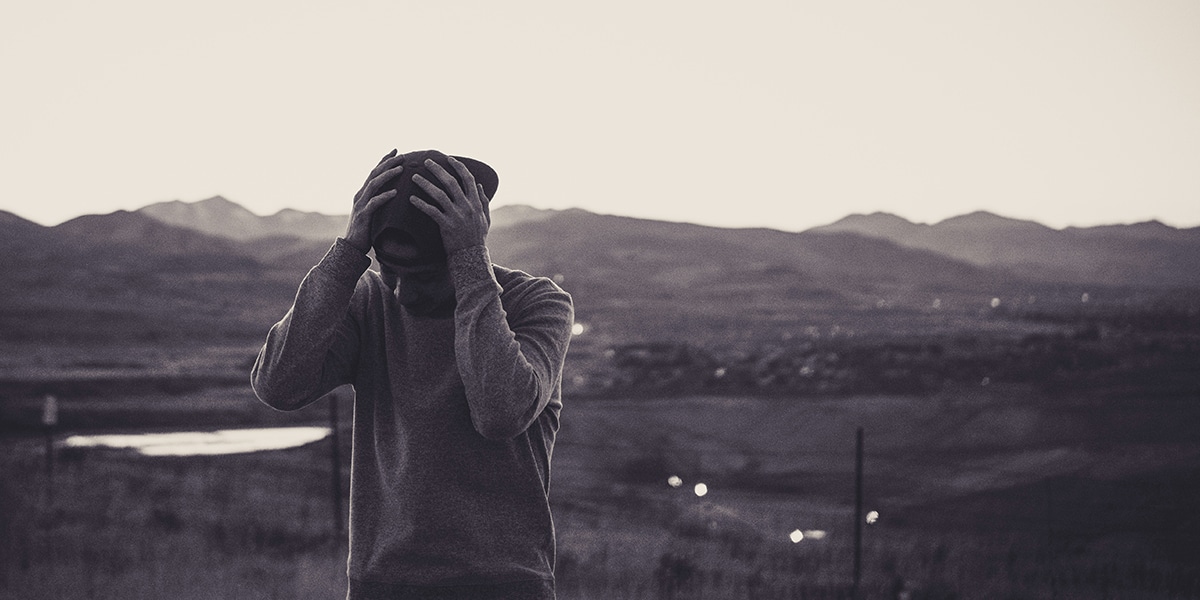While numbers in congregations of women religious are falling in the United States, Catholic sisters from all corners of the country are reimagining how to live out their missions in a shifting cultural landscape.
Returning to Mount St. Joseph University in Cincinnati after COVID-19 restrictions, I took a walk on the nearby front avenue of the Sisters of Charity Motherhouse. As I settled into the serene mood, my walk provided me with lush hardwood and pine trees, inviting bird calls, and views of the winding Ohio River. So I was taken aback when I realized something was missing.
Something big.
In place of the 90-year-old Seton Hall, once a dormitory for coeds at the “old” College of Mount St. Joseph, there was . . . nothing. Straw covered the dirt where grass was being teased out of the ground.
I had known for years that, like other congregations of women religious, fewer women were joining the Sisters of Charity, and there were more sisters retired now than in active ministry.
The removal of Seton Hall—it was too old and expensive to update—was a concrete reminder that the sisters who had taught me in grade school, high school, and college were experiencing dramatic changes.
Sobering Statistics
Catholics who grew up in the 1950s or ’60s might be shocked to learn of the realities facing women religious today. When I attended a Catholic grade school, staffed by Sisters of Charity, we typically had one or two classes for each grade, most taught by women religious: Sister Joan, Sister Mary Christa, Sister Elizabeth Regina, Sister Hilda, Sister Mary Raphael; my only lay teacher in grade school was Mrs. Stocker.
That was the postwar era, when Catholic families typically had six or more children enrolled in parish schools. And many of those students were attracted to religious life. In my family, three of the six daughters entered the Sisters of Charity, and one of them recently celebrated her entrance into the community 62 years earlier.
“Sixty or 70 years ago, thousands and thousands of women entered religious life in the United States. That didn’t happen in earlier times,” explains Sister Carol Zinn, a Sister of St. Joseph of Chestnut Hill, Pennsylvania, and executive director of the Leadership Conference of Women Religious (LCWR). Today, according to data collected by the National Religious Retirement Office in 2023, 6 percent of women and men religious in the United States are 30 to 49 years old, 24 percent are 50 to 69, and 71 percent are 70 or older.
Statistics from Georgetown University’s Center for Applied Research in the Apostolate reveal that, in 1970, there were 160,931 women religious in the United States, in contrast to 35,680 in 2023.
A Worldwide Network of Sisters
While laypeople like me are fretting over the loss of the sisters and “the good old days,” leaders of most US communities have read the signs of the times and see their shifting numbers and aging members. They are not denying that reality. Instead, they are “actively assessing their numbers and resources, then discerning a path that will assure a viable future for each member to live [her] vocation fully at each stage of her life,” explains Sister Carol.
That’s where LCWR plays a vital role. The group represents approximately 66 percent of the 35,000 women religious in the United States from 294 congregations.
LCWR “has no authority over religious congregations because each congregation is its own civil and canonical entity,” says Sister Carol. “We are trying to accompany leaders of women religious to engage in their reality so as not to miss the opportunity for new life and hope at this time of ongoing transformation of religious life.”
So, for example, the generosity of LCWR members to accompany each other and share resources could mean that a chief financial officer or human resources administrator from one congregation might offer some service to another congregation.
“The phrase global sisterhood takes on new meaning for women religious in these times of significant change and transition,” Sister Carol explains. “Walking together in mission and ministry is a hallmark of women’s religious congregations, in times past, in the present, and into the future as we journey together.”
Sister Anne Munley, a member of the Sisters, Servants of the Immaculate Heart of Mary in Scranton, Pennsylvania, is associate director for LCWR’s Discerning Our Emerging Future Initiative. “We are not Pollyannas about the real issues,” she says. “We have assured LCWR members that no one is alone, though different congregations are at different points. God is on this journey with us.
“Letting go is part of the organizational transition. Ministries formerly sponsored by a religious community will now move forward with lay leadership,” she says, adding that “some congregations will come to ‘historical completion’ just because their numbers are sharply decreasing.”
Though these stark examples and statistics might startle lay readers, leaders of women religious congregations have been aware of the trend for at least 40 years.
A Reorientation
When Sister Monica Gundler, president of the Sisters of Charity of Cincinnati, joined that congregation in 1986, there were four sisters in her “cohort,” which she says was unusual; typically the congregation welcomed one new member a year. She recalls hearing the then-president of the Charities use the term diminishment about the size of her congregation.
Even earlier, in 1979, Marianist Brother Lawrence Cada and other scholars explored the history of religious life over the centuries in a book titled Shaping the Coming Age of Religious Life. The 1984 revision was the result of collaboration among scholars from the Marianists, the Sisters of Charity of Seton Hill, and the Sisters of Notre Dame de Namur.
In the 1984 introduction to Cada’s book, he describes four or five years of the scholars meeting, researching, and drawing upon their experiences of renewal in each of their religious communities since the 1970s.
What emerged was “an intriguing exploratory hypothesis: that religious life in America was undergoing a major transition, one that had been underway for at least 15 years, and which would take another 15 or 20 years to complete its major movements,” according to the book. “The magnitude of this transition would be major and significant, and perhaps would be viewed in the future as one of the most significant periods in the evolution of religious life.”
The authors went on to predict what contemporary women religious are now experiencing: “The transition would effect a deep reorientation in the way that religious would live in community and the way they would be of service to the Church and the world.”

Reorienting is anything but simple or comfortable. Central to each community’s discerning the way forward that best fits their members and history has been a process LCWR initiated, where communities have entered into “contemplative dialogue,” explains Sister Jane Herb, former president of the Sisters, Servants of the Immaculate Heart of Mary in Monroe, Michigan, and past president of LCWR. “This process helps us to create an atmosphere of quiet and to bring a listening heart. We respect and honor what each person is saying.”
That listening involves all members, from the newest to the oldest. The newest member of Sister Jane’s community is 40-year-old Sister Jane Aseltyne. Before she made final vows in August 2024, she already had been invited to be a member of a committee for the transition, one looking at future ownership of their motherhouse.
“It was a big property that we could not carry any longer,” the younger Sister Jane says. “It was a difficult decision but a sign of hope that we are looking to free ourselves from structures that are holding us from moving on.”
Sister Jane Herb credits this change to “pausing and listening” so that the newest leadership team that emerged “is a younger face of leadership.” That’s another sign of hope for Sister Jane Aseltyne. “It feels good to see younger leaders. I feel represented,” she says. “The four members of our leadership team are bringing a new energy to our congregation. They were in formation after Vatican II and have had a wide variety of ministry experiences in religious life that reflect more of my own.”
Investing in the Future
Knowing that newer members of religious orders need to feel represented and heard is important to Sister Jane Herb and leaders of other congregations. In preparation for her presidential address to LCWR members at their assembly in 2022, Sister Jane invited four groups of sisters to have conversations with her about the future. One of these groups attending a town hall meeting with her were 24 sisters from Giving Voice.
Giving Voice is “a peer-led organization that creates spaces for young Roman Catholic women religious to give voice to their hopes, dreams, and challenges in religious life,” according to the group’s website, Giving-Voice.org. The website explains the need for such an intercommunity group: “As women religious under 50 years of age, we are often minorities in our home communities. We yearn for peer relationships with other women religious. Unlike our sisters before us, a home-based peer group sits outside the realm of possibility, and we understand this aspect of our current reality.”
As a conversation starter, Sister Jane asked, “In the spirit of Rip Van Winkle, if you fell asleep for 20 years, when you woke up, what would religious life look like?” When several Giving Voice members had to Google “Rip Van Winkle,” she noted in her 2022 address, “in a small way, this reminded me of the different perspectives that we bring to such a conversation.”
“Hope-filled” is how she characterized the interaction with these women under age 50. Here’s what they envisioned religious life would be like in 20 years: It will be “intercultural,” “less institutional,” living the vowed life to “give witness within our global community.” Leadership will be “circular and mutual,” and “the focus will be mission-driven and not one of maintenance.”
‘You Look At It, You Bless It, Then You Let It Go’
Those are the younger sisters, but what about those retired and aging? There are hard choices about their future. One of them involves the reuse of empty buildings. When Sister Jane’s order began looking to transfer its motherhouse to another entity, “a nonnegotiable [item] was that our sisters would be able to stay together, and they would have the level of care they needed: independent, assisted living, skilled care, and memory care.”
The new owner of IHM Senior Living Community, Saint Therese Senior Living, also allowed the IHM sisters to keep leadership offices in the building, rent free.
“For 177 years, the IHM sisters have been part of Monroe, Michigan, and we didn’t want our presence to be missing,” she says. “When we transferred ownership of the building, we let the Monroe people know ‘IHM is not going anywhere.’” In their deliberations about the future, the Sisters of Charity of Cincinnati made a decision about some of their land holdings that are now enriching Cincinnati-area residents.
Sister Monica remembers, “Fifteen years ago, I talked to a sister who was promoting the idea of donating some property for a land trust. I told her that when the time was right, sisters in leadership will make that decision.” The sisters’ gift of 75 acres to Western Wildlife Corridor (WWC) made the local news in 2023. It’s the largest gift in WWC’s 31-year history, according to a story posted on WVXU.org. Jeff Ginter, president of Western Wildlife Corridor, Inc., says in the article: “We’re thrilled. This is an extraordinary gift.”
Sister Joanne Burrows, representing the Sisters of Charity leadership team, comments, “We’ve been lucky to have the land—to enjoy the land, to be responsible for its care and stewardship—and now we’re just grateful that there’s another group that we deeply respect to want to take care of this wonderful gift.”
Passing on gifts of land and buildings is not always easy, says IHM Sister Anne, but the sisters are discerning and generous enough to know that it’s time.
“You look at it, you bless it, then you let it go,” she says.
In my rich conversations with six sisters from a variety of congregations, one Scripture passage has surfaced several times and explains the leaders’ surprisingly upbeat tone, given the decisions they are making. The quote from Isaiah 43:19 strikes the perfect note on which to end this account of courageous, joyful women embracing a radically new call:
“See, I am doing something new! Now it springs forth, do you not perceive it?”
Web-Only Content
Meet the Future
As a child “living close to the land” in upstate New York with evangelical Christian parents, Bethany Welch never envisioned that in February 2024 she would be professing first vows in the chapel at the Motherhouse of the Sisters of St. Joseph in Chestnut Hill, Philadelphia. She knew little about the Catholic faith or women religious, but as an art major at a Christian college, she was intrigued talking with a professor who was converting to Catholicism. And, in her studies, she was “immersed in Catholic art that was so different from my religious tradition where there were no images.”
After college, working as an AmeriCorps Vista volunteer in Philadelphia, she was impressed by Catholics living their faith in a poor neighborhood. Many schools and parishes were closing, but the Sisters of St. Joseph, who had been in that part ofPhiladelphia for many years, stayed, reaching out to poor and immigrant neighbors. In 2005, after completing RCIA (Rite of Christian Initiation of Adults) in a parish where she was working, Bethany became a Catholic.
From 2004 to 2008, while she was pursuing a PhD and researching adaptive reuse of church property for community development, a priest mentor invited her to work in South Philly. Meanwhile, she was feeling a pull to examine life in a religious order, so she attended “Come and See” events hosted by several congregations. Should she choose to join one of those communities, she would have a lot to give up: she had dated, been engaged, owned a car and a house, and was a foster parent to a young woman.
Discernment was intense for this 45-year-old, especially given the shrinking numbers in the congregations. A key question she faced was “What if I’m the last person standing?” She wanted to be wise and prudent in making her decision, so she had many questions for the SSJ leaders: What was the community’s long-term viability? What financial structures were in place? Did they provide healthcare? Who would be her companions as the order’s numbers dwindled?
Her discernment led her to commit to the Sisters of St. Joseph. When she was with these sisters, “I didn’t hear them bemoaning the loss of an institution. When I was with them was when I felt most authentic,” she says. “I was with like-minded people sharing joy from a place of abundance.”
Her years in formation have been alongside other young women from a federation of Sisters of St. Joseph congregations. She knows that someday she will probably live in a house in a neighborhood. Her community will “have a smaller footprint, have no institutional ministries, and work with our lay partners in mission.”
Living a consecrated life, “to be radically available to God’s work,” appeals to her. So does the congregation’s willingness to “live what they believe, being open to ministry with those on the margins.”
Describing herself as “a Pope Francis vocation,” she quotes generously from the Pope’s 2014 “Letter to All Consecrated People,” which includes these words of encouragement: “Embrace the future with hope. We all know the difficulties which the various forms of consecrated life are currently experiencing, [including] decreasing vocations and aging members. But it is precisely amid these uncertainties…that we are called to practice the virtue of hope, the fruit of our faith in the Lord of history, who continues to tell us: ‘Be not afraid…for I am with you’” (Jer 1:8).









4 thoughts on “The Nuns Are OK: Building a Sustainable Future for Women Religious ”
Most encouraging!! Like the author I had nuns exclusively in grade school. My twin sister joined the IHMs in 1959 and remained a member until she died 6 years ago. I support the IHM community financially and follow their plans for the future. The article gives me hope for their future
I couldn’t read all of this (“Web Only…missed) but the content above it was so interesting, tugging at the heart.
The Sisters of Charity (I think) staffed our local Catholic school at St. John’s in Miami in the 50s, & they were so wonderful–i was a public school student, & still treasure their preparing us for Communion & Confirmation. Precious times!!!
I wish I could contribute to religious flourishing again, as I had such a seriously important experience helping me through life of almost 80 years. You have my prayers always—thank you all, always.
I really enjoyed reading this article as it is quite noticeable that convent life is in decline. More women are happily living out there vocation among the working population. Family life is also in a transition. More parents are homeschooling.
Jesus, surrender myself to you!
This very informative article tugged at my heartstrings. I received my Catholic education from grade school
through the completion of college. I always wanted to be a teacher because I loved school since my father encouraged me to get all the education I could since it was a valuable gift no one could take from me. My teachers, the nuns, were an
inspiration to me. I have an understanding of what the nuns are experiencing since I became a Franciscan Companion five
years ago and have been involved in some of their similar meetings. The sisters are praying, meeting, planning and discerning
God’s Will in their future. I am now joining them in their prayer of discernment and suggest that others offer prayer in
support of them. They are hopeful and believe that the Holy Spirit is guiding them a day at a time. God will speak in His time
and they will know the work He will call them to do. “Do not be afraid,” as Pope Francis mentioned. All will be well!!!